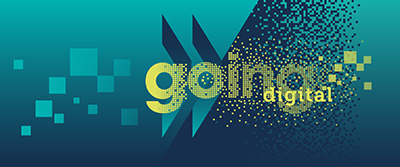Addressing digital divides (Parallel sessions): Bridging the digital gender divide
11 Mar 2019 14:30h - 15:30h
Event report
[Read more session reports and live updates from the OECD Going Digital Summit]
Ms Maria-Inés Baque (Secretary of Public Management and Innovation, Argentina) highlighted that it is important to introduce robotics and programming from early ages in education, as well as help women re-enter the work market after their maternity leave to close the digital gender divide. Baque also spoke about the importance of quotas in incorporating women, but cautioned that quotas can result in positions being filled by persons that do not possess the most experience, knowledge, or potentials.
Mr William Spriggs (Chief Economist, The American Federation of Labor and Congress of Industrial Organizations [AFL-CIO]) stated it is important not to perpetuate the myth that women cannot participate in technology. The most important episodes in the 20th century, such as breaking the code of the Axis powers or sending man on the moon were led by women. Anti-discrimination policies are key to breaking the myth. Enforcement policies as well as recruitment, hiring, and retention of women are necessary to monitor companies that have a bad culture for women. Speaking on the subject of economic awards, Spriggs stated that it is important that workers are rewarded for their works, that innovation is rewarding, and that the digital age raises, and lowers, living conditions. He concluded by stating that we must study our history in order to understand the systemic ways we inforce stereotypes.
Ms Gabriela Ramos (OECD Chief of Staff and Sherpa to the G20) stated the significance of family-friendly policies in bridging the digital divide. She underlined that women going into tech need cultural change which will break stereotypes and change role modelling for both girls and boys. In OECD’s research, it was found that teachers, parents, and girls themselves do not have high expectations of girls’ performance, so they are less likely to choose disciplines that appear more difficult; which necessitates that education is reformed and changed. Ramos spoke about the findings of the OECD’s ‘Bridging the Digital Divide’ report, sharing that 25% of graduates in science, tech, engineering, and math (STEM) are women, 8% of innovations are led by women, and 85% of software development is done by men, concluding that women are not contributing enough to the digital revolution.
Ms Nicola Hazell (Gender equality advocate and Founding Director of SheStarts, Australia) emphasised that there are many policies that help bridging the digital gap; and when we see how they come together, we can address the digital divide. She stressed it is necessary to take into account the whole ecosystem, and that working in silos will render initiatives ineffective. Hazel give advice for women entrepreneurs who want to start their own companies, that it is fundamentally important that they are a part of a community that shares experience on the subject and where it is possible to learn from and lean on others. She concluded by stating that we must understand systemic and cultural barriers that exist for women in science.
Ms Janis Karklins (Ambassador of Latvia to the United Nations in Geneva) stated that changing mindsets is very important in bridging the digital gap. In his opinion, the culture, knowledge, and tradition which pose limitations on us are from an analogue era, but they need to change in the digital era. According to Karlinks, it is necessary to persevere as digital divides are an ever-changing phenomenon; the digital gender divide is a conversation that involves both genders – women cannot have this conversation alone and it is not their mindset that needs to be changed, it is the men’s mindset. Karlinks concluded that, in order to reduce inequality, we should all submit ourselves to a bias test so we can stop the ‘blue and pink syndrome’.
By Andrijana Gavrilović
Related topics
Related event

